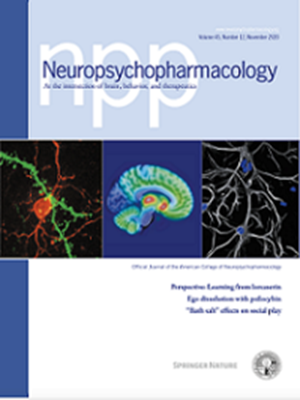Prediction of alcohol intake patterns with olfactory and gustatory brain connectivity networks
IF 6.6
1区 医学
Q1 NEUROSCIENCES
引用次数: 0
Abstract
Craving in alcohol drinkers is often triggered by chemosensory cues, such as taste and smell, which are linked to brain network connectivity. This study aimed to investigate whether these brain connectivity patterns could predict alcohol intake in young adults. Resting-state fMRI data were obtained from the Human Connectome Project (HCP) Young Adult cohort, comprising 1003 participants. Functional connectomes generated from 100 independent components were analyzed, identifying significant connections correlated with taste and odor scores after applying a false discovery rate (FDR) correction using the Benjamini-Hochberg (BH) method. These significant connections were then utilized as predictors in general linear models for various alcohol intake metrics. The models were validated in an independent sample to assess their accuracy. The training sample (n = 702) and the validation sample (n = 117) showed no significant demographic differences. Out of 742 possible connections, 41 related to odor and 25 related to taste passed the significance threshold (P < 0.05) after FDR-BH correction. Notable predictors included visual-visual connectivity (node32-node13: β = 0.028, P = 0.02) for wine consumption and connectivity between the ventral attention network (VAN) and the frontal parietal/caudate nucleus (FP/CN) (node27-node9: β = −0.31, P = 0.04) for total alcohol intake in the past-week and maximum number of drinks per day in the past-year. The predictive models demonstrated strong accuracy, with root mean square error (RMSE) values of 5.15 for odor-related models and 5.14 for taste-related models. The F1 scores were 0.74 for the odor model and 0.71 for the taste model, indicating reliable performance. These findings suggest that specific patterns of brain connectivity associated with taste and olfactory perception may serve as predictors of alcohol consumption behaviors in young adults. Our study highlight the need for longitudinal research to evaluate the potential of taste- and smell-related brain connectivity patterns for early screening and targeted interventions, as well as their role in personalized treatment strategies for individuals at risk of AUD.

用嗅觉和味觉大脑连接网络预测酒精摄入模式。
饮酒者的渴望通常是由化学感觉线索引发的,比如味觉和嗅觉,这些线索与大脑网络连接有关。这项研究旨在调查这些大脑连接模式是否可以预测年轻人的酒精摄入量。静息状态fMRI数据来自人类连接组计划(HCP)青年成人队列,包括1003名参与者。分析了由100个独立组件生成的功能连接体,在使用Benjamini-Hochberg (BH)方法应用错误发现率(FDR)校正后,确定了与味觉和气味评分相关的重要连接。然后,这些显著的联系被用作各种酒精摄入指标的一般线性模型的预测因子。这些模型在一个独立的样本中进行了验证,以评估它们的准确性。训练样本(n = 702)和验证样本(n = 117)没有统计学差异。在742个可能的连接中,41个与气味有关,25个与味道有关,通过了显著性阈值(P
本文章由计算机程序翻译,如有差异,请以英文原文为准。
求助全文
约1分钟内获得全文
求助全文
来源期刊

Neuropsychopharmacology
医学-精神病学
CiteScore
15.00
自引率
2.60%
发文量
240
审稿时长
2 months
期刊介绍:
Neuropsychopharmacology is a reputable international scientific journal that serves as the official publication of the American College of Neuropsychopharmacology (ACNP). The journal's primary focus is on research that enhances our knowledge of the brain and behavior, with a particular emphasis on the molecular, cellular, physiological, and psychological aspects of substances that affect the central nervous system (CNS). It also aims to identify new molecular targets for the development of future drugs.
The journal prioritizes original research reports, but it also welcomes mini-reviews and perspectives, which are often solicited by the editorial office. These types of articles provide valuable insights and syntheses of current research trends and future directions in the field of neuroscience and pharmacology.
 求助内容:
求助内容: 应助结果提醒方式:
应助结果提醒方式:


